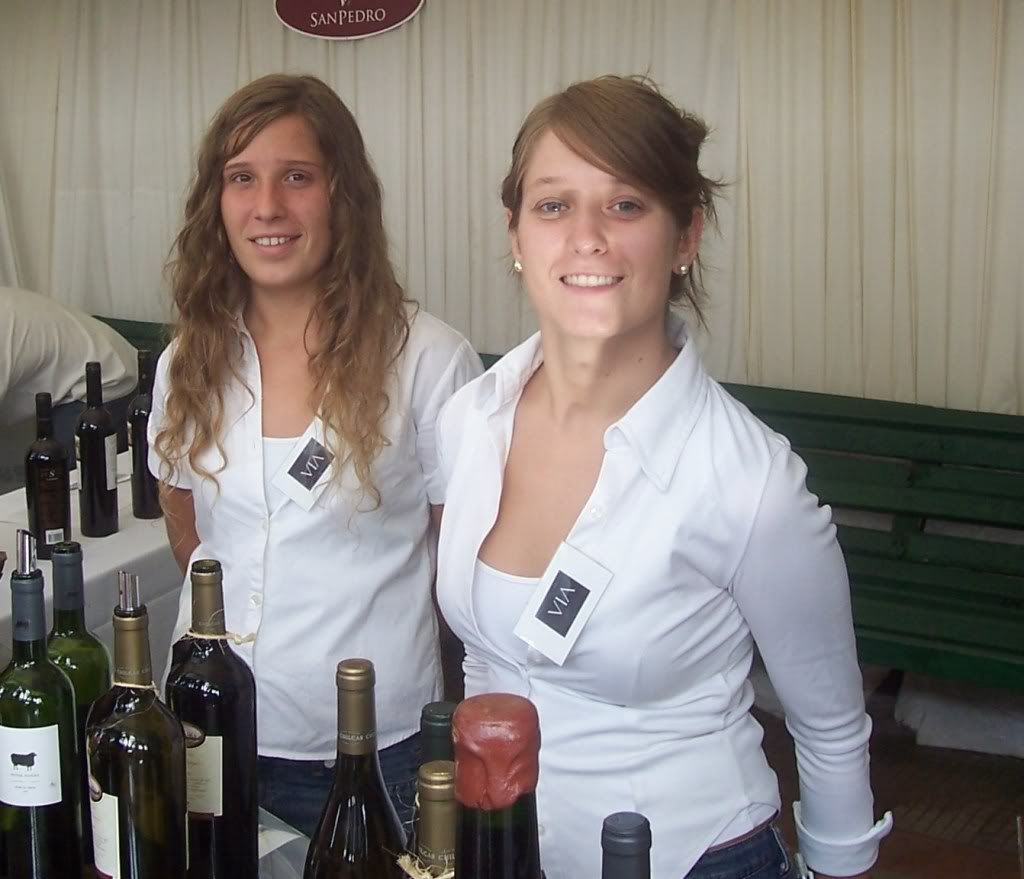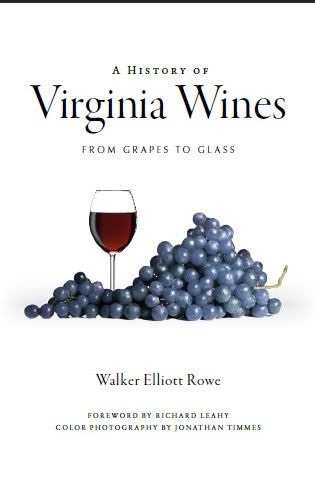Continue Reading...
Monday, September 21, 2009
Local sixfortyseven
Continue Reading...
Wednesday, September 16, 2009
Boutique Wineries in Chile

Flaherty Wines
Having arrived in Chile 16 years ago, this son of an American agronomist sits behind the computer ordering wine barrels for future vintages as chief winemaker at the million case winery Tarapaca. This towering gringo longs to get his hands into the pomace and away from the keyboard having worked as chief winemaker at the mega wineries Errazuriz and VIA Wines. So on the weekends Ed Flaherty heads home to the Aconcagua Valley where he produces 25 barrels of red wine a portion of which when it is available includes tempranillo which he is planting at a new vineyard in Cauquenes near the Italian-owned Caliboro winery.
Ed fostered an interest in tempranillo having worked a harvest in Spain and having spent time in Argentina where are a consultant for the Zuccardi family he developed a tempranillo wine. Of Chile he says, “There is very little tempranillo planted in Chile, maybe10 hectares so no one really knows what the potential of the variety is or where it grows best in Chile”. Ed selected Cauquenes for his new plantings of tempranillo, syrah, and cabernet franc because this coastal mountain region has just enough annual rainfall to allow dry farming. The area is heavily planted with 100 year old head trained mission grapes, called “país” in the Spanish. Ed says, “the Red clay soils, rolling hills and moderate climate 40 kilometers from the coast have started to produce some really good red wines from carignan, carménère, syrah and a occasional cabernet sauvignon.”
UK Agent: Boutique Wines of Chile
Koyle
For Chileans the name “Undurraga” is synonymous with those odd shaped wine bottles with the wide bottom. But that is history as the family has sold the label. In its place they have planted 35 hectares in the upper Colchagua Valley and joined the ranks of boutique winemakers in Chile. The father Alfonso and daughter Rebecca work in finance and administration while one of the sons, also named Alfonso, works both at the new winery and as commercial manager at Matetic. The other son Cristobal left his day job working at Aurelio Montes´s Kaiken winery in Argentina after having worked one vintage at Chateau Margaux, another in Napa Valley, and at the Rosemount Estate where he picked up English saying his French is pretty bad but improves with a glass or two of Bordeaux. Having quit working for others he has plunged headlong full-time into the new family venture working as enologist and viticulturist. Cristobal says he went to work in these overseas wineries to gain experience that he could apply to Undurraga. At the Rosemount Estate he says he learned to apply quality standards to really large quantities of wine. At Chateau Margaux he found winemaking with passion coupled with a constantly development of new techniques. He bundled those experiences into what he calls a “fusion” of old and new world styles and brought them back to his native Chile.
Koyle is located in a corner of the Colchagua Valley where grows a rare purple flower of the same name. The vineyard situated here at the foothills of the Andes is divided into three terraces. Syrah and carménère in the bottom terrace are planted on grafted rootstock to reduce their vigor. But cabernet sauvignon and other red grapes planted on less vigorous soils are planted on their own roots. The vines are so well balanced that they require hedging only once per year or not at all during the growing season.
UK Agent: Genesis
Polkura
Polkura vineyard in the Colchagua Valley produces exclusively syrah on yellow granite soil whose name in the Mapuche language is “Polkura”. The partners here include Sven Bruchfeld who was chief winemaker at the giant Chilean winery Santa Carolina.
Having quit Santa Carolina last year to pursue his 2,000 case boutique winery full-time, Sven Bruchfeld is one of Ed Flaherty´s protogées from Errazuriz. This Chilean whose mother is from Norway planted the Polkura vineyard in 2002. The property is located in Marchigue between Santa Cruz and Pichilemu. Neighboring vineyards include Montes, Los Maquis and Bisquertt. Of the location Sven says, “It is sort of an area in between. It is not cool climate, but it is not warm climate either. So you get cool climate character on the nose but on the palette is it more warm climate--more full bodied and textured wine.”
Agent in UK: Direct Wines Ltd
Antiyal
Alvaro Espinoza and his wife farm Marina Ashton farm two vineyard red wine grapes in Maipo. In 1996 they planted Antiyal which is 1 hectare of carménère, cabernet sauvignon and syrah valley vineyard followed by Kuyen which is another hectare of syrah and cabernet sauvignon. Alvaro is considered by many in Chile to be the innovator of the boutique winery concept and Chile´s foremost biodynamic grape grower having planted the Emiliana Organic Vineyard and others. He is much in demand from his grape growing and winemaking clients so his wife Marina takes care of day-to-day operations of the family vineyard. Marina says, “We started Antiyal Winery, with the vision of making a family wine teaching our kids to make wine, have a nice time, and grow grapes organically in our own vineyard.” With accolades flowing in from the international press this small family business soon became a full-fledged winery producing 19,000 bottles per year leaving Marina with her hands full. She says, “In the year 2000, we stated selling and I started helping Alvaro, I had another job, but then we had more and more orders. Someone needed to take care of the day to day work.” The vineyard is readily identifiable as one of Alvaro´s biodynamic projects with flowers planted in the vineyard rows to attract beneficial insects and chickens scratching at the soil to get rid of the bad ones, mainly mites. Horse drawn plows cultivate the soil instead of tractor mounted equipment. The weather here in Maipo is for the most part rain free so there is no need to spray systemic nor manufactured chemicals. Because the vineyard is biodynamic the harvest and training of the vines is timed to the rhythm of the moon and stars. Compost replaces fertilizer.
UK Agent: Adnams
Facundo
Facundo is not a winery but a label. These wines are produced by the husband and wife team of Felipe García, a winemaker from Casas del Bosque; and Constanza Schwaderer, whose day job is making wine at Córpora where her husband says she is in charge of all the top projects. Formerly, Felipe was a winemaker at Calina which is Kendall Jackson´s operation in Chile. He says working at Calina he learned to buy high quality grapes from such farm flung locales as the Limari Vallley. Of that experience he says, “For that reason the grapes that we choose for our project are really small growers with unique conditions.” Now he sources grapes for Facuno from Itata Valley to the South and Limari in the bone dry North.
Facundo does not have their own winery nor equipment so they use the facilities of the Tabonkö winery where works his former boss from Kendall Jackson. While acknowledging that it could be difficult for anyone to work too much time with one´s spouse, Felipe says his wife brings some French perspective to this Chilean operation. Felipe says his wife, who he calls “Cony”, worked side by side with French winemaker Pascal Marchard making pinot noir and chardonnay in he Burgundian fashion. Córpora have been a joint venture with the Boisset family of Burgundy then called “Veranda” but then Córpora bought out the French.
UK Agent: No agent in the UK
Continue Reading...
Boutique Wineries in Chile
Sphere: Related ContentMonday, September 7, 2009
Philip Carter Winery Fetes Virginia Wine History Event
September 5, 2009 Contact: Donna Johnson
FOR IMMEDIATE RELEASE Public Relations Director
Hume, VA - The celebration of Virginia Wine Month takes on mammoth proportions with the weight of just one event at Philip Carter Winery on October 17. This date is reserved for The History of Virginia Wine Dinner, an elegant evening in which guests are transported through the history of Virginia wine. The evening will include the unveiling of the historical document signed in 1763 by Royal Governor Francis Fauquier certifying the pioneering achievement of Charles Carter as the first person in America to successfully grow and produce quality wine from European vines. Carter’s wines, produced at Cleve Plantation, Virginia, were received by the Royal Society of the Arts, UK, in 1762 and awarded an international gold medal in recognition of Carter’s spirited attempt at making fine wine. These were the first internationally recognized fine wines in America.
Author Walker Elliot Rowe will speak at the dinner about his new book, A History of Virginia Wine: From Grapes to Glass, noting the section specific to the Carter family’s 250-year history with wine production in Virginia. The evening will also include the unveiling of an original oil painting of Crooked Run Valley (both historic and an upland bird area) by graphic designer Allan Guy, a landscape now a featured part of the Governor Fauquier labeling. Released for this particular event, this exceptional white wine honors the historic connection between Fauquier County’s namesake, where Philip Carter Winery is located, and the Governor’s 1763 certification of Carter’s achievements in wine production.
A portion of the proceeds of this signature night will be donated to Ducks Unlimited, the nation’s largest conservation organization. Each attendee will be provided with a Ducks Unlimited membership and an autographed copy of Mr. Rowe’s book. Carefully choreographed and executed by A La Carte, the four-course meal will include traditional Virginia dishes, pairing perfectly with Virginia produced wines. A host of luminaries will be present for this very special event.
Continue Reading...
Philip Carter Winery Fetes Virginia Wine History Event
Sphere: Related ContentSunday, September 6, 2009
The soils of Calyptra
Continue Reading...
The soils of Calyptra
Sphere: Related ContentThursday, September 3, 2009
Bari California Olive Oil and Wiebe Farms
Continue Reading...
Bari California Olive Oil and Wiebe Farms
Sphere: Related ContentThursday, August 20, 2009
A History of Virginia Wines from Grapes to Glass

A History of Virginia Wines: From Grapes to Glass
ISBN: 978-1-59629-701-2 • Paperback • September 2009
By Walker Elliott Rowe
Continue Reading...
A History of Virginia Wines from Grapes to Glass
Sphere: Related ContentSaturday, July 11, 2009
Joel Salatin´s Polyface Farm
Continue Reading...
Joel Salatin´s Polyface Farm
Sphere: Related ContentWednesday, May 27, 2009
Travel Guide for Chile


Continue Reading...
Travel Guide for Chile
Sphere: Related ContentSunday, May 24, 2009
A Farmers Market in Santiago
I am still here in Chile having turned over the goats to a goatherd and a vineyard to a vineyard worker. So for my blog on Virginia agriculture today I write about the farmers market in Chile.
This is a four day weekend in Chile to mark the end of the War of the Pacific on May 21 which is when Chile defeated Peru and Bolivia enlarging their country and denying Bolivia access to the sea. Since the holiday is a Thursday Chileans take Friday for vacation as well. They have not pushed all their federal holidays to Monday as we have done so the kids get an extra day off school.
Here in central Santiago in a neighborhood located between Cummins and Quinta Normal subway stops peddlers line the street for a dozen blocks selling everything from clothes to seafood to vegetables. The streets are crowed on this cloudy Sunday morning as worshipers pile out of the Salvation Army church a few blocks away. The city library is crowded with students working on the free internet access provided there. The walls could use painting. Many books have their covers worn. At the entrance there is mention of a grant from the Melinda and Bill Gates Foundation. In the markets crowds of illegal immigrants from Peru sell pirated DVD music, candy apples, socks, or a single brassier if that is all they have for inventory. It would seem only in the USA and maybe Europe that copyright piracy laws are really enforced so the gringo pays $29 for the latest movie while on the street here it costs $2.
I head into the street to buy cilantro and peppers, kiwi, and olives, spring onions, and carrots. I am looking for a ready-made mix of spices called “verdura surtida” which is hojas de apio(celery), perejil (like cilantro), and oregano fresco(fresh oregano). Carrots are called “zanahorias”. Bell peppers are “pimentones”. Spring onions are “cebollin italiano”. Kiki of course is “kiwi” and plaintains are “platanos”.
According to today's La Tercera newspaper the latest fashion in agriculture in Chile arearellanos, which are hazelnuts, which you can have with your coffee at Starbucks. The newspaper says they can be grown here cheaper than anywhere else in the world. Fortunes have been made here and lost in olives, oranges, grapes and kiwi and now perhaps arellanos but those markets are given to wide swings in price. There is lots of kiwi planted here in Chile. One male plant is planted in the middle of a dozen or so females. The vines are trained overhead in theparron style of trellis which is used to grow table grapes and low quality wine grapes. You can readily tell a kiwi farm when you drive buy because the fruit smells strongly like kerosene.
All of this produce is of course local agriculture except no one touts “locally grown” or “organic” or any of that because Chile is one giant cultivated garden at least where the ground is not vertical (I.e. The Andes) or desert or timbered forest. So many people work in agriculture here not simply as laborers but as salesmen, agronomists, managers, and other that they don't treat it as a novelty like we do in the outer burbs of Northern Virginia. The situation here in Chile must be like, say, Fresno, California where agriculture is simply a way to earn a living for an entire communities.
Back at the market I have filled two shopping bags—you need to bring your own---for 4,000 pesos (about $8). I have some money left over so I buy oranges (naranjas) and acetunas which you might call “olivias” except they are not as salty. (Salt is to olives as vinegar and alum are to pickles)

Continue Reading...
A Farmers Market in Santiago
Sphere: Related ContentTuesday, May 19, 2009
Eldon Farms
Continue Reading...
Eldon Farms
Sphere: Related Content





